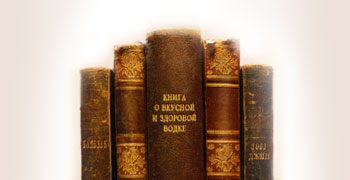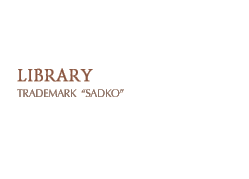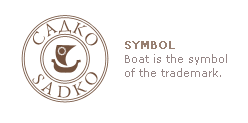|
|
The word ‘alcohol’ is of Arabic origin (‘al-kuhl’, antimony powder). The Arabs used this word to name the highest stage of distillation, i.e. quintessence (from Medieval Latin ‘quinta essentia’ – the fifth essence).
The discovery of the method of obtaining the intoxicating base of wine, which turned to be a transparent, volatile, highly inflammable liquid, was indeed the epoch-making event. It meant the possibility of eliciting the wine spirit (Latin ‘spiritus vini’). Thus, the Russian word ‘spirit’ (i.e. an alcohol solution) was derived from Latin.
In 1386 the Genovese embassy first brought wine under the name of ‘aqua vitae’ into Russia. It was demonstrated at court, but did not create a favourable impression upon Moscow boyars and foreign druggists. In 1429 Russian and Greek monks, as well as some Genovese merchants supplied Russia with a large amount of ‘aqua vitae’. But again, the ‘philtre’ had no effect. And what is more, it was recognized as harmful and, thus, banned from importation into the country.
The pure Russian distillation first appeared in the 15th century; it was in 1448-1474 that the Russian technology of obtaining spirit out of the local raw materials was invented. In the 1480’s Ivan III monopolized the production and sale of wheat wine, beer, and honey. Since then the production of alcoholic liquors had become the state, tsarist regalia.
As far back as the 16th century Russian vodka was transported to Livonia and Estonia. In 1506 the Swedes exported some “fiery wine” from Moscow, too.
By the middle of the 17th century, the production of vodka in Russia became the prerogative of the nobility. The decree of 1755 released all the Russian noblemen from any taxation, though it strictly determined the allowed quantity of homemade vodka, which differed in accordance with the noble’s rank. Thus, grand dukes, princes, and counts received more opportunities to produce vodka than the gentry did. At the same time, members of other estates – the clergy, the merchants, the petty bourgeoisie, and the peasantry – were deprived of the right to distill, and, thus, had to buy vodka at state distilleries. On the whole, the reform had led to the violent growth in the production of high-quality homemade vodkas. Every nobleman produced his own brand of wine. As a result, a great variety of Russian vodkas appeared in the 18th century.
At the beginning of the 19th century Russian vodka was brought into France. Despite the severity of the French aristocracy towards delicate dishes and drinks, Russian vodka was estimated at its true worth for its clearness and noble taste. Since then the systematic export of Russian vodka into the European countries had began. Russian supplied Europe with the best rye vodka it produced, while the Russians had to consume the cheap Ukrainian vodka distilled from potatoes and beet.
The end of the 19th century was characterized by the astounding growth in the production of cheap homemade vodkas. It furthered the spreading of the most unbridled hard drinking among the Russian people. As a result, in 1894 the whole system of distillation was reformed – the production and sale of vodka had become the prerogative of the state. The reform significantly increased the strength of the Russian economy – at the beginning of the 20th century the receipts from vodka made up more than a third of the annual revenue.
During the WWI vodka in Russia was produced only for the technical needs of the front; its sale was strictly prohibited. In accordance with the decrees of the Soviet government in 1917 the ban on the sale of vodka was prolonged for the period of the Civil War. Vodka and wine were considered the bitterest enemies of the Revolution.
Only in January 1924 the production and sale of vodka in the USSR were resumed. At that time many prominent Soviet chemists made their valuable contribution to the perfection of Russian vodka. Thus, Professor G. Kucherov suggested adding household soda to vodka, which made the latter healthier. Professor A. Verigo applied a new method of determination the fuseloils in a rectified product and introduced the charcoal as a good purifier.
Right up to the beginning of the WWII, the USSR successfully maintained the high standard of Russian vodka; moreover, its quality was constantly improving. During the WWII the production of vodka was fivefold reduced. But each serviceman regularly received 100 grams of vodka per day.
After the WWII, the quality of Russian vodka was continually raising. It’s not by chance that in 1953 Russian vodka “Moskovskaya Osobaya” (“Moscow special”), “Stolychnaya”(“Metropolitan”), “Posolskaya” (“Ambassadorial”), “Siberian”, obtained the recognition of the whole world.
The period of so-called ‘perestroika’, or economic restructuring of the USSR, proved to be quite harmful to the production of vodka. Many distilleries were dismantled; some of them were re-equipped into non-alcoholic factories.
In the 1990’s the Russian government realized the erroneousness of the pursued vodka policy. As a result, in 1993, in accordance with the decree of the Russian President, the production, storage, wholesale and retail trades of all alcoholic beverages were monopolized by the state. Since then everything is done to preserve the unique taste and high quality of the genuine Russian vodka.
|



